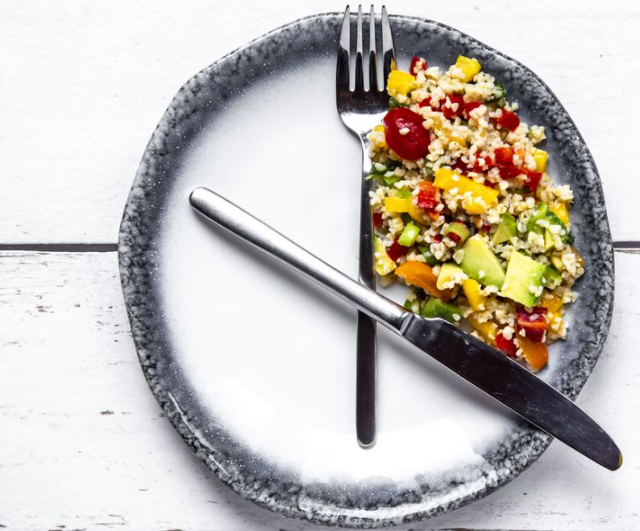Intermittent fasting has been very trendy in recent years. It’s claimed to cause weight loss, improve metabolic health, and perhaps even extend lifespan. There is several different types or methods of intermittent fasting have been created.
Here are 6 popular ways to do intermittent fasting.
Fast for 16 Hours Each Day
The 16/8 method involves fasting every day for 14–16 hours and restricting your daily eating window to 8–10 hours. Within the eating window, you can fit in two, three, or more meals.
Doing this method of fasting can actually be as simple as not eating anything after dinner and skipping breakfast. For example, if you finish your last meal at 8 p.m. and don’t eat until noon the next day, you’re technically fasting for 16 hours.
It’s generally recommended that women only fast 14–15 hours because they seem to do better with slightly shorter fasts.
For people who get hungry in the morning and like to eat breakfast, this method may be hard to get used to at first. However, many breakfast skippers instinctively eat this way. You can drink water, coffee, and other zero-calorie beverages during the fast, which can help reduce feelings of hunger.
It’s very important to primarily eat healthy foods during your eating window. This method won’t work if you eat lots of junk food or an excessive number of calories.
Fast for 2 Days Per Week
The 5:2 diet involves eating normally 5 days of the week while restricting calories to 500-600 for two days out of the week.This diet is also called The Fast Diet.
On the fasting days, it’s recommended that women eat 500 calories and men eat 600 calories. For example, you might eat normally every day of the week except Mondays and Thursdays. For those two days, you eat two small meals (250 calories per meal for women and 300 calories for men).
Eat Stop Eat
Eat Stop Eat involves a 24-hour fast once or twice per week. By fasting from dinner one day to dinner the next day, this amounts to a full 24-hour fast.
For example, if you finish dinner at 7 p.m. Monday and don’t eat until dinner at 7 p.m. the next day, you’ve completed a full 24-hour fast. You can also fast from breakfast to breakfast or lunch to lunch — the end result is the same. Water, coffee, and other zero-calorie beverages are allowed during the fast, but no solid foods are permitted.
If you’re doing this to lose weight, it’s very important that you eat normally during the eating periods. In other words, you should eat the same amount of food as if you hadn’t been fasting at all.
The potential downside of this method is that a full 24-hour fast may be fairly difficult for many people. However, you don’t need to go all in right away. It’s fine to start with 14–16 hours, then move upward from there.
Alternate-day fasting
Alternate-day fasting means fasting every other day.There are several different versions of this method. Some of them allow about 500 calories during the fasting days.
Many of the lab studies showing health benefits of intermittent fasting used some version of this method. A full fast every other day can seem rather extreme, so it’s not recommended for beginners. With this method, you will be going to bed very hungry several times per week, which is not very pleasant and probably unsustainable in the long term.
The Warrior Diet
The Warrior Diet was popularized by fitness expert Ori Hofmekler. It involves eating small amounts of raw fruits and vegetables during the day and eating one huge meal at night.
Basically, you “fast” all day and “feast” at night within a 4-hour eating window. The Warrior Diet was one of the first popular “diets” to include a form of intermittent fasting.
This diet also emphasizes food choices that are quite similar to a paleo diet — whole, unprocessed foods that resemble what they looked like in nature.
Spontaneous meal skipping
You don’t need to follow a structured intermittent fasting plan to reap some of its benefits. Another option is to simply skip meals from time to time, such as when you don’t feel hungry or are too busy to cook and eat. It’s a myth that people need to eat every few hours lest they hit starvation mode or lose muscle. Your body is well equipped to handle long periods of famine, let alone missing one or two meals from time to time.
Thus, if you’re really not hungry one day, skip breakfast and just eat a healthy lunch and dinner. Or, if you’re travelling somewhere and can’t find anything you want to eat, do a short fast. Skipping one or two meals when you feel inclined to do so is basically a spontaneous intermittent fast.
You can try these method to get desired result, Intermittent fasting is not for everyone. It’s not something that anyone needs to do. It’s just another tool in the toolbox that can be useful for some people.





